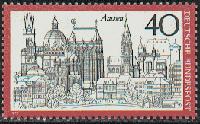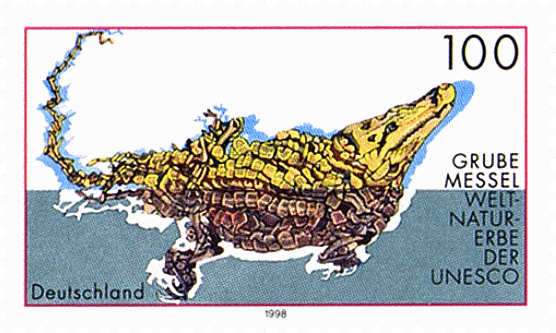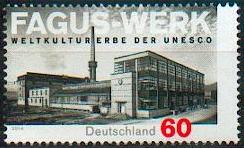

The site consists of sections of the border line of the Roman Empire at its greatest extent in the 2nd century A.D., part of what is known as the "Roman Limes". All together, the Limes stretched over 5,000kms from the Atlantic coast of northern Britain, through Europe to the Black Sea, and from there to the Red Sea and across North Africa to the Atlantic coast. This is part of the trans-national listing including Hadrian's Wall

For visitors it is best to drive to the large "Kaiserpfalz Nord" carpark at the foot of the Imperial Palace (Kaiserpfalz). From here the impressive Romanesque Imperial Palace opens up to view. In the naturally scenic background the over 600-metre-high Rammelsberg Mountain rises. In it are the ore mines, which closed down only as recently as 1988.

Quedlinburg's Old Town bears witness to eight centuries of traditional half-timbered architecture. The world heritage site also embraces St. Wigbert's Church and Burgber and Munzenberg Hill.

The site constitutes the sediment remains of an ancient lake bed lying on deposits of 270 to 290 million year Old Red Sandstone, with crystalline magmatic primary rocks emerging under some sediments. The Eocene period basin (50-60 million years ago, Tertiary Epoch, Cainozoic Era) of the Messel formation had been hollowed out by faults in the earth's crust.

Between 1919 and 1933, the Bauhaus School, based first in Weimar and then in Dessau, revolutionized the architectural and aesthetic concepts and practices inherited from the Renaissance. The buildings put up and decorated by the school's professors (Walter Gropius or Hannes Meyer, Laszlo Moholy-Nagy or Wassily Kandinsky) launched the Modern Movement which shaped much of architecture of the 20th century.
The WH site contains: Goethe's Home at the Frauenplan, Schiller's Home, The Widow Palace, The Town Church St.Peter and Paul, The Residential Palace, the Duchess Anna Amalia Library, the Ducal Vault and Historic Cemetery, the Park on the river Ilm with its Roman House, Goethe's Garden House, the Tiefurt Palace and Park, the Belvedere Palace and Orangery and its Park, the Ettersburg Palace and Park.
Parking is available at the base of the castle.
The Garden Kingdom of Dessau-Worlitz includes the palace and park of Mosigkau, the landscape garden of Gross-Kuehnau, the Georgium palace and the Georgen garden, the Luisium palace and park, the park and gardens of Worlitz, the palace and park of Oranienbaum.
Connect to the mainland by a causeway.
The two Bauhaus-inspired architects Fritz Schupp and Martin Kremmer were responsible for its unique design, a harmonious blend of geometric shapes and symmetrical features arranged around two axes. Shaft 12 and the coking plant, the outstanding features of the mine, set new standards in industrial design.
The mine was shut down in 1986 after 55 years in operation. The coking plant and shaft 12 now form part of a unique industrial monument, and are home to a vibrant arts centre. Regarded as "the most beautiful mine in the world," it is a testament to the modern architectural movement of the 1920s and 1930s and the rise of heavy industry.
Originally added to the list in 2004, this is the second site to be deleted from the world heritage list in 2009. According to Unesco the reason for deletion is the building of a four-lane bridge in the heart of the cultural landscape which meant that the property failed to keep its "outstanding universal value as inscribed."
Bremen Town Hall and the Roland statue symbolise the rise of the Hanseatic League, which the city joined in 1358. Both are unique representations of the rise in autonomy and granting of market rights enjoyed by European townsfolk in the Holy Roman Empire. Roland was erected in 1404 as an emblem of Hanseatic freedom. It is said to be the oldest statue in Germany still in its original location.
Landscaped park along the Neisse river on the border between Poland and Germany, it was created by Prince Hermann von Puckler-Muskau from 1815 to 1844.
Six housing estates from 1910-1933. Bruno Taut, Martin Wagner and Walter Gropius were among the leading architects of these projects which exercised considerable influence on the development of housing around the world.
Joint listing with The Netherlands and Denmark.
For more links see Joint listing with Slovakia.
Joint listing with Albania, Austria, Belgium, Bosnia and Herzegovina, Bulgaria, Croatia, Czechia, France, Germany, Italy, Macedonia, Poland, Romania, Slovakia, Slovenia, Spain, Switzerland, and Ukraine. These are the largest remaining virgin forests of the European beech (Fagus sylvatica). They also hold the largest and tallest beech specimens in the world. This site originally consisted of ten separate components along an 185 km axis from the Rakhiv Mountains and the Chornohirskyi Range in the Ukraine, west along the Polonynian Ridge, to the Bukovske Vrchy and Vihorlat Mountains in Slovakia. The listing was extended in 2011 to include 5 Ancient Beech forests in Germany, further extended in 2017 to include more forests in 10 countries, and further extended in 2021.
Joint listing with Austria, France, Germany, Italy, Slovenia, and Switzerland. This property includes 111 small individual sites with the remains of prehistoric pile-dwelling (or stilt house) settlements in and around the Alps built from around 5000 to 500 B.C.

This landmark in the development of modern architecture began around 1910 to the design of Walter Gropius. With its groundbreaking vast expanses of glass panels and functionalist aesthetics, the complex foreshadowed the work of the Bauhaus school.
The dramatic water displays were laid out by Landgrave Carl of Hesse-Kassel from 1689 on, to display his power as an absolute ruler.
The Westwork is the only standing structure dating back to the Carolingian era (800s AD). It is located along the Weser River outside of Hoxter.
These are two densely built urban areas in the center of Hamburg.
Multiple sites in: Argentina, Belgium, France, Germany, India, Japan, and Switzerland (multiple sites)
Chosen from the work of Le Corbusier, the 17 sites comprising this transnational serial property are spread over seven countries and are a testimonial to the invention of a new architectural language that made a break with the past. They were built over a period of a half-century, in the course of what Le Corbusier described as "patient research".
The Danevirke was a system of Danish fortifications across the neck of the Cimbrian peninsula initiated sometime before 500 AD in the Nordic Iron age and later expanded by the Vikings. Hedeby was an important trading settlement in the area.
Joint listing with Czechia.
Established in 1897 by Ernst Ludwig, the buildings of the colony were created by its artist members as experimental early modernist living and working environments.
This joint listing comprises 11 towns, located in seven European countries. All of these towns developed around natural mineral water springs.
Following the left bank of the Lower Rhine River for approximately 400 km from the Rhenish Massif in Germany to the North Sea coast in the Netherlands, the transnational property consist of 102 components from one section of the frontiers of the Roman Empire.
The acronym ShUM stands for the Hebrew initials of Speyer, Worms and Mainz.
For more information see:
Lynn Salmon <>{
Last updated: January 9, 2024